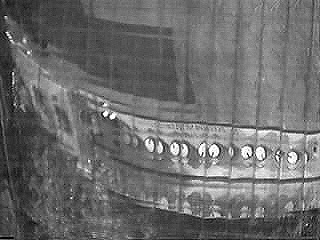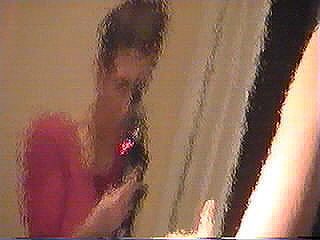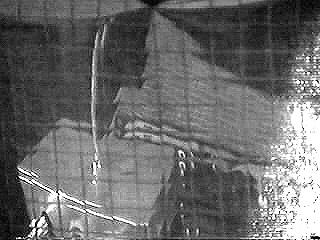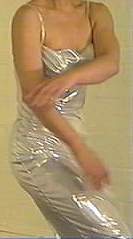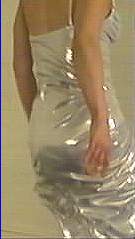string is an installation/live performance piece which addresses limitations in the use of the physical body and digital/internet-based technology as part of live performance contexts. Through manipulating the threshold between two and three dimensional considerations of the physical space, the piece explores connections between the physical and the virtual. It proposes a hybrid multi-spatial environment which unfolds within a time frame strictly defined by the travelling of digital information between two different physical locations of the performance.
Inspired by Gaston Bachelard's Poetics of Space (and in particular, Bachelard's philosophical investigation of the meanings emerging from the spatial possibilities of corners), string investigates ossible interpretations of the elements of 'inside' and 'outside' in the notion of space and has employed a number of theoretical and practical methodologies. The mathematical concept of the hypercube has been used as a starting point for the creation of a sculptural object which functions as a visual score for the musician. The use of video projections alongside live performance aim at challenging notions of perspective, surface and depth in the visual presence of live performance manifestations.
HOW THE PIECE WORKS?
COMPONENTS
a movement-based solo in Location A
a computer connected to the Internet, a sound system, two video projectors (with a mixing desk) and ‘live’ video mixer/editor share the same space with the movement solo (Location A)
a sound-based solo (2 theremins, sampler and FX unit) in Location B
a video camera connected to a computer which is also connected to the Internet and a ‘live’ video camera operator share the same space with the theremin player (Location B)
RELATIONSHIPS OF COMPONENTS
the activity in the theremin player’s performance location (Location B) is recorded live on video by the camera operator (who creates the visual material following a choreographic score), this recording is then webcast live via the computer
the live webcast accessed through a website is received by the video editor in Location A and directed to the sound system and video projector of this location
the movement solo in Location A is then accompanied by the sound of the theremins as received through the webcast
the movement solo in Location A interacts with the video projection of the webcast; the images are projected on various surfaces including the walls of that space and/or the body of the performer; the editing/mixing and spatial position of the images follows a choreographic score
AIMS OF THE PIECE
To experiment with a movement-based live piece which unfolds within a sonic environment constructed by remote and mediated sound materials. These sounds not only travel (through telephone cables) in order to reach the location of the movement performance but, when they arrive there, they also offer the possibility of their own visual integration in this environment through their video images. The video projections are used to manipulate the structure of the performance space by constantly changing the relationships between two and three dimensional space. The juxtaposition of the three-dimensional shape of the performing body with the two-dimensional video images of the projection and the mapping of these images on the sculptural/three-dimensional surfaces of the performer's body, both become strategies to negotiate the materiality of body and light. By these means, string explores connections between the physical and the virtual and proposes a hybrid multi-spatial environment which unfolds within a time frame defined by the travelling of digital information between the two different physical locations of the performance.
STRING is an on-going project including a series of presentations, critical debates and documentation which focus on different elements (eg. performance and ecology, systems research in the arts)
NOTES
a consideration, expansion of awareness of spaceinteractioncomposition of virtual and physical space of two and three dimensional space surfaces as doors of visionmultiple layersfusionjuxtapositionissues of time in communicationinformation/elements travelinformation/elements are re-shaped by the conditions of travelling timing/waitingthe movement of the live performer addresses the limitations of the live/physical bodythe dance is re-defined spatially by the image of the sound
the video work is doubly choreographed: the movements of the live video camera are choreographed, the video images of this recording which are received through the webcast and projected by the video editor/mixer are re-organised in time and space capitalising on the contrast between large and small projections.
back to string
